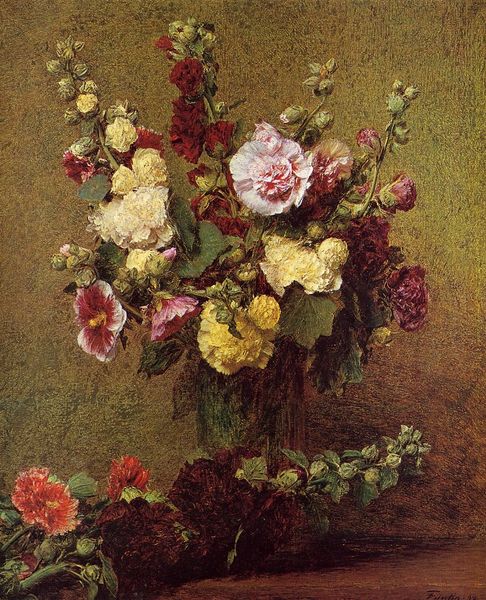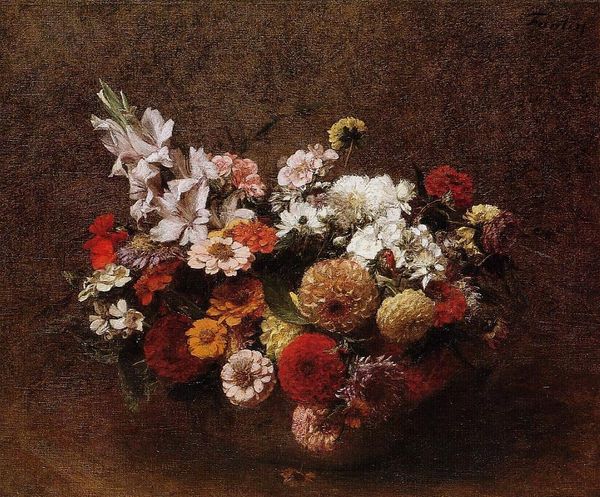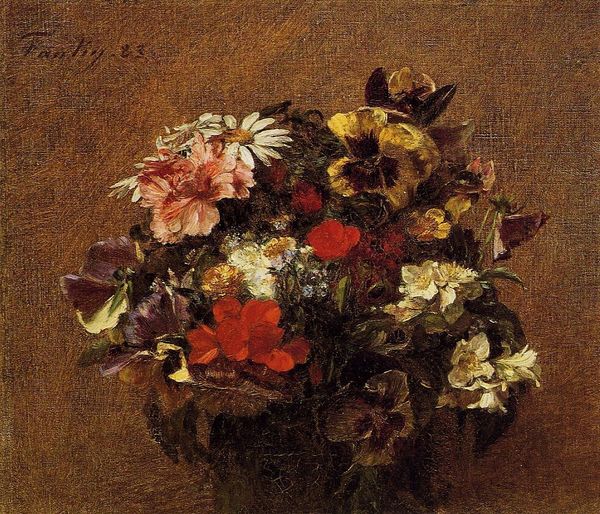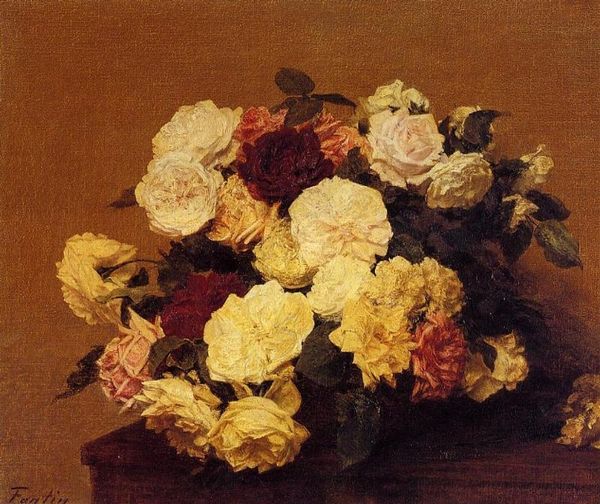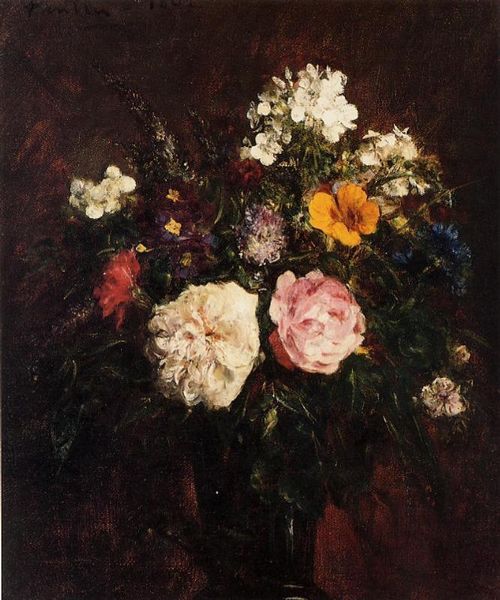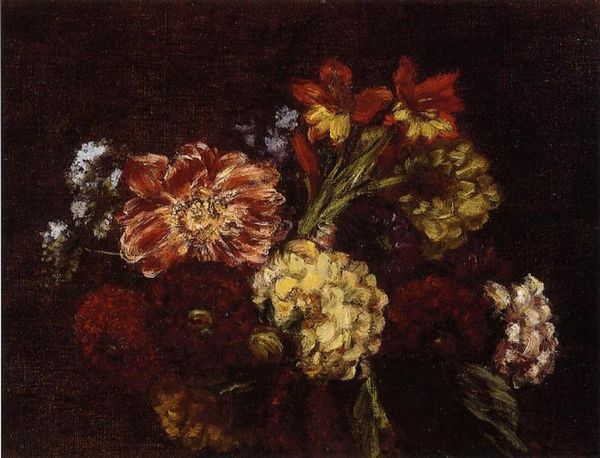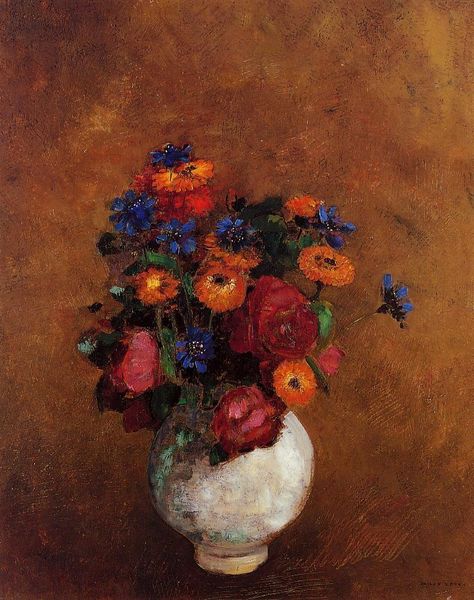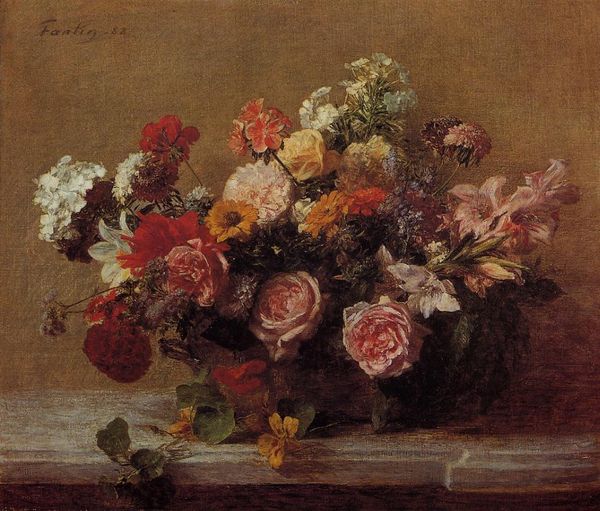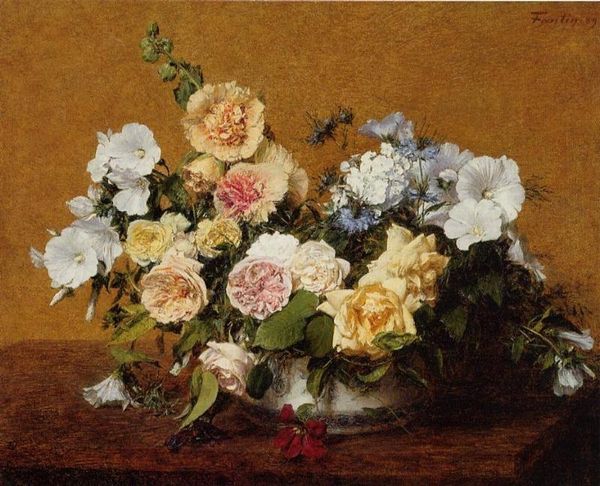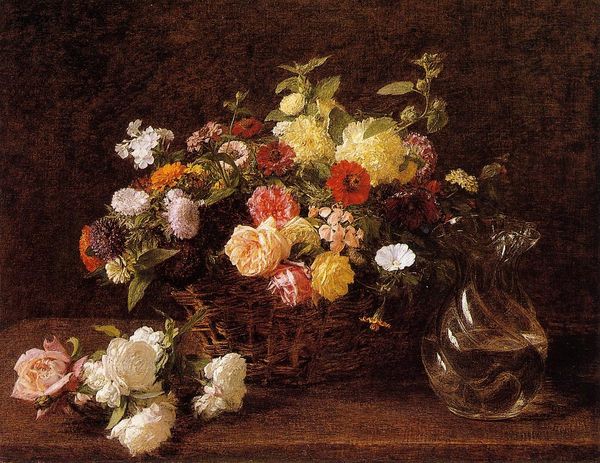
Copyright: Public domain
Editor: So, we’re looking at "Bouquet of Flowers," painted by Henri Fantin-Latour in 1894, using oil paints. The flowers are clustered, but there's something almost somber about it. How would you read this piece? Curator: From a materialist perspective, this painting isn't simply a decorative image. Let’s think about the labor involved: the cultivation of these flowers, the extraction and preparation of pigments, the weaving of the canvas. Do you see how each stage reveals a complex network of social and economic relations? Editor: That’s interesting. I hadn't really considered the labor aspect. Curator: Precisely! Fantin-Latour’s realism wasn't just about accurately depicting the flowers. It's also about the prevailing cultural conditions in which those flowers become a subject worthy of art. Were such bouquets signs of wealth and leisure? Or something else? Editor: I guess that makes sense. I’m also wondering about photography at this time. It looks like this could be inspired by the stark backgrounds in photographs of the time. How would it be different than experiencing a photograph of this bouquet? Curator: Photography does have some influence, for sure. Painting gives a different material quality, and would allow Fantin-Latour to express different layers of reality and ideology. What aspects of consumption might Fantin-Latour be subtly critiquing by making art in this medium instead? Editor: I think understanding that historical context—with all that labor and material interconnectedness—changes how I see the painting a lot. Curator: Indeed. Seeing art through this lens encourages a broader appreciation of material practices and social implications behind beautiful surfaces.
Comments
No comments
Be the first to comment and join the conversation on the ultimate creative platform.
